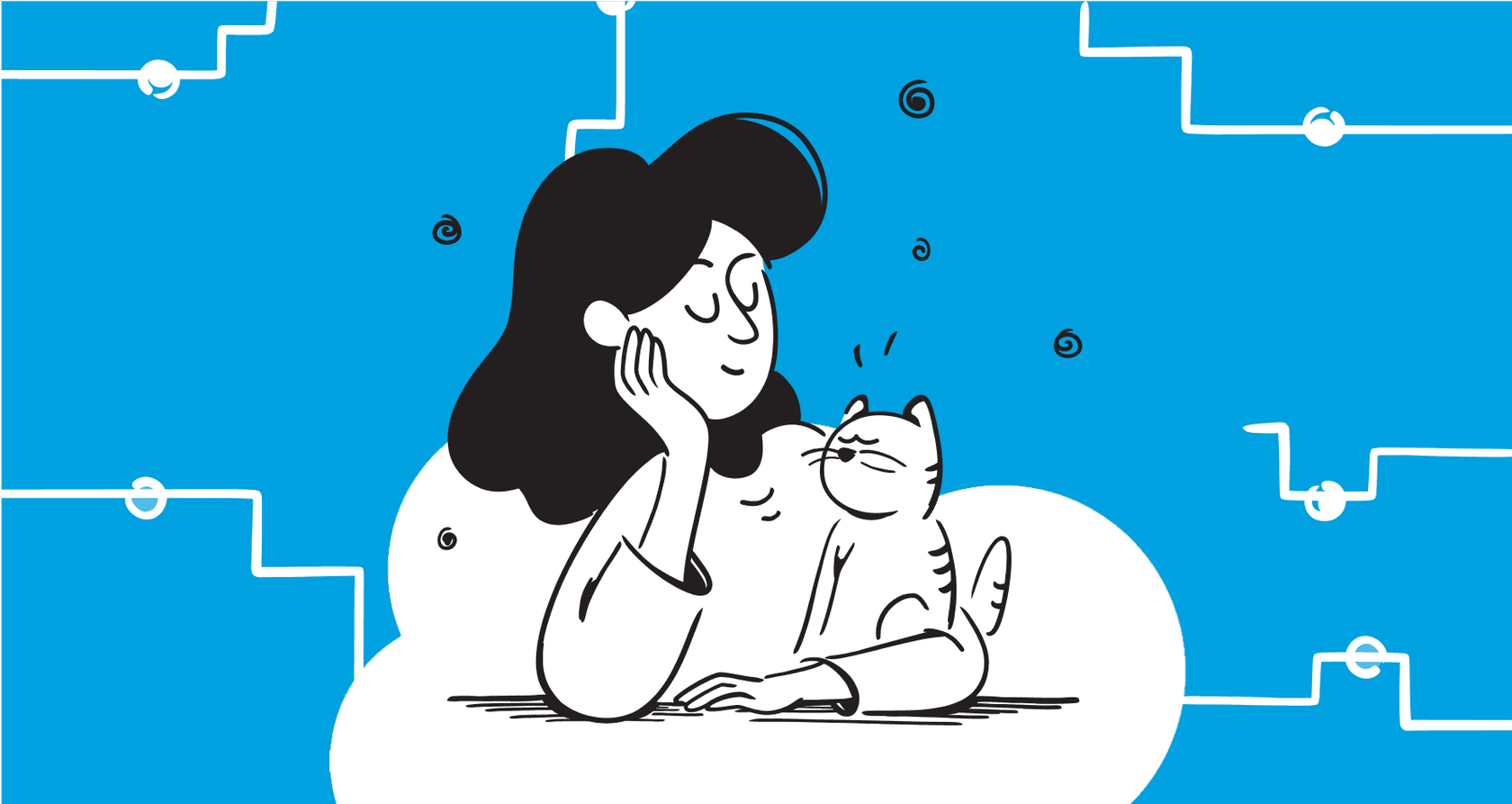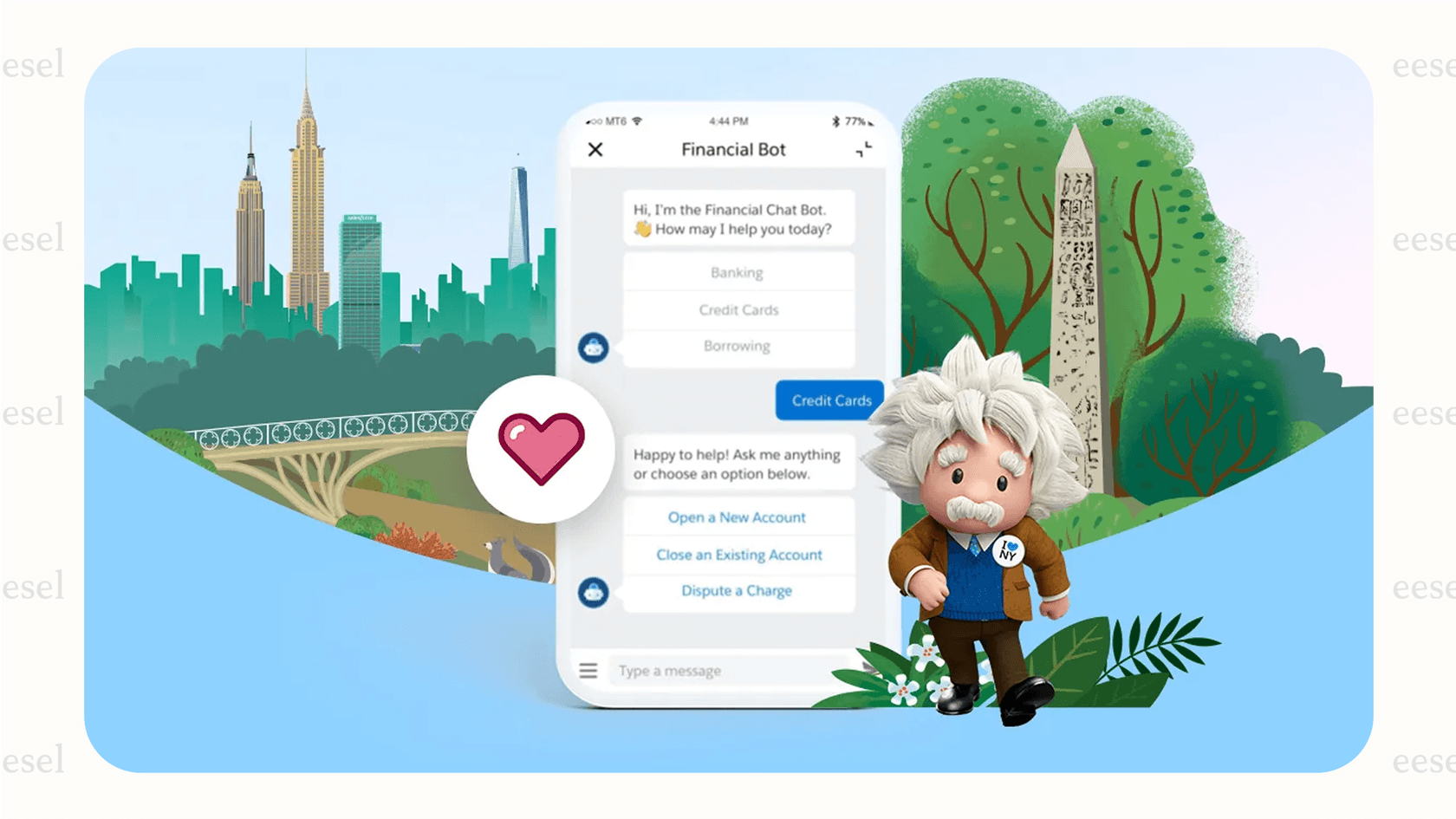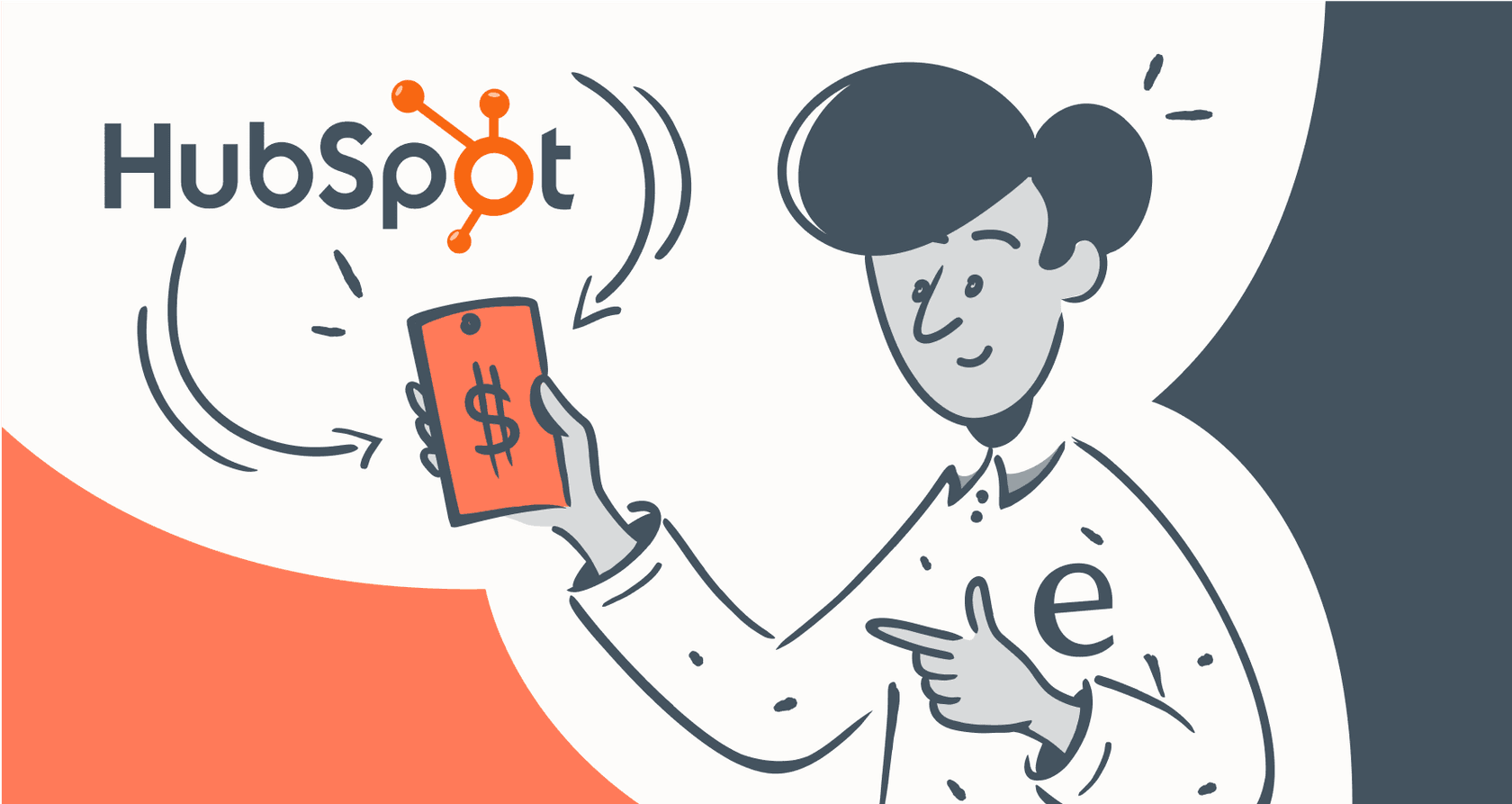
It seems like every time you turn around, Salesforce is rolling out a new AI tool. You’ve probably heard the names floating around: Agentforce, Einstein, “digital teammates.” These Salesforce digital assistants are pitched as the next big thing for sales, service, and marketing teams working inside the world’s biggest CRM. But with all the buzz, it’s easy to get lost and wonder what these tools actually do.
That's what this guide is for. We're going to cut through the marketing fluff and give you a straightforward look at what Salesforce's AI assistants are, what they can (and can't) do, and how they’re supposed to work. Most importantly, we'll talk about the real-world limitations and costs you need to consider before jumping in. Because while having one powerful system for everything sounds great in theory, sometimes a more flexible AI that connects all your tools is a much better fit in practice.
What are Salesforce digital assistants?
At their core, Salesforce digital assistants are a set of AI-powered tools built to automate tasks and provide smart suggestions right inside the Salesforce platform. You’ve likely come across names like Agentforce, Einstein Copilot, or even Slack AI. The branding changes, but the goal is always the same: use artificial intelligence to make your teams more productive.
 A screenshot of the Salesforce Agentforce landing page, which is one of the primary Salesforce digital assistants.
A screenshot of the Salesforce Agentforce landing page, which is one of the primary Salesforce digital assistants.Think of them as a helpful coworker who lives inside your CRM. They’re built to understand normal, everyday language, so you can ask them questions or give commands without needing to be a tech wizard. For instance, you could ask your assistant to "pull up the support history for this customer" or "draft a follow-up email from my last call."
The main thing to grasp is that these tools are designed to be "native" to Salesforce. Their greatest strength is how deeply they’re wired into Sales Cloud, Service Cloud, and all the other Salesforce products you use. They learn from your Salesforce data, which makes them powerful, but it also creates a major blind spot if your company’s brain doesn't live 100% inside that Salesforce bubble.
Core features of Salesforce digital assistants
Salesforce has stuffed a lot of different capabilities into its AI platform. Here are the main features you’ll probably be working with.
Deep CRM data integration
The biggest selling point for Salesforce's AI is its direct pipeline to your CRM data. It can pull from and make sense of everything you've stored in Salesforce, accounts, contacts, support cases, sales opportunities, you name it.
A sales rep could ask, "Show me my meeting notes for the ACME Corp account," and the assistant should be able to pull up that info instantly from the right records. This sounds fantastic, and it can be. But here’s the catch: it all hinges on your data being clean, organized, and consistently updated. If your data hygiene is a bit of a mess, the AI is going to have a rough time giving you reliable answers.
Task automation and content generation
These assistants are meant to take over the tedious, manual tasks that drain your team's energy. Some common jobs they can handle include:
-
Writing first drafts of emails and follow-up messages.
-
Boiling down long case histories or meeting notes into a few key bullet points.
-
Automatically updating records or logging activities after a call or meeting.
-
Answering questions by digging through your internal Salesforce Knowledge articles.
 A screenshot of the Salesforce Einstein Copilot, one of the key Salesforce digital assistants, showcasing its content generation capabilities.
A screenshot of the Salesforce Einstein Copilot, one of the key Salesforce digital assistants, showcasing its content generation capabilities.This can be a huge time-saver, but the content it creates is only as good as the information it can see. If the best answers to a customer's question are tucked away in a document outside of Salesforce, the AI simply won't find them.
Role-specific and industry-specific skills
Salesforce gets that a sales rep and a service agent don't need the same kind of help. To address this, they've created pre-built "skills" tailored for different roles and industries. A service agent might get AI-powered response suggestions based on similar support tickets, while a marketing manager could get help building a targeted customer list for an upcoming campaign.
This level of specialization is a pretty neat feature, but it also means you’re going to need to set aside a good amount of time and resources for configuration. Getting the AI to work smoothly with your team's specific workflows isn't something that happens overnight.
Key use cases for Salesforce digital assistants
So, what are businesses actually doing with these tools? The applications stretch across sales, service, and even internal operations.
Automating customer service workflows
One of the most common uses for Salesforce digital assistants like Einstein Bots or Agentforce is to handle frontline customer support. They can answer frequently asked questions, route tickets to the right agent or department, and give your human agents a quick summary of a case before they dive in.
 A screenshot of a Salesforce Einstein Bot, one of the Salesforce digital assistants, offering assistance in a customer portal.
A screenshot of a Salesforce Einstein Bot, one of the Salesforce digital assistants, offering assistance in a customer portal.This works like a charm when all your support knowledge lives neatly inside Salesforce Knowledge articles. But let's be realistic, that's almost never the case. Most support teams depend on a mix of documents stored in places like Confluence or shared in Google Docs. When your knowledge is spread out like that, the Salesforce AI can't see the whole picture, leading to more escalations and less genuine automation.
Boosting sales team productivity
For sales teams, the name of the game is spending less time on admin and more time actually selling. These assistants can help by automatically prepping for meetings with summaries of a prospect's history, using AI to score leads so reps know who to focus on, and drafting personalized follow-up emails. This frees up reps to focus on building relationships instead of getting buried in data entry.
Streamlining internal employee support
You can also point Salesforce AI inward to run your internal help desks for IT or HR. Instead of a person having to answer the same questions over and over, an AI assistant can handle things like, "How much vacation time do I have left?" or automate simple IT tasks like a password reset.
While these are all solid use cases, they share a common assumption: that your team works exclusively within Salesforce. For most companies, crucial knowledge is scattered across a dozen different apps. This is a common headache, and it's where a more connected tool like eesel AI comes in. It's built to unify information from Salesforce, Confluence, Google Docs, Slack, and more into a single source of truth for your support team.
Limitations and challenges of Salesforce digital assistants
While Salesforce offers a powerful set of tools, their all-in-one approach comes with some pretty big hurdles you should be aware of.
Complexity and long implementation times
Let's just be honest: setting up AI in Salesforce is not a simple, plug-and-play experience. It's a massive, complex platform, and getting its AI tools to fit your business requires serious technical know-how and a lot of time. We’re talking about a full-blown IT project that can take months.
This is a stark contrast to modern tools that are built to be self-serve. Unlike the long sales cycles and mandatory demos you get with enterprise software, platforms like eesel AI let you connect your help desk and go live in minutes.
Ecosystem lock-in and data silos
Salesforce digital assistants are designed with one main purpose: to keep you inside the Salesforce ecosystem. They are at their best when working with Salesforce data. If you want to pull in knowledge from external sources like Notion, an internal wiki, or even past tickets from a different help desk like Zendesk, things get complicated and expensive fast. You might even find yourself needing to buy another Salesforce product, like Data Cloud, just to get your information connected.
 A screenshot of the eesel AI landing page, an alternative to Salesforce digital assistants that breaks down data silos.
A screenshot of the eesel AI landing page, an alternative to Salesforce digital assistants that breaks down data silos.This is the exact problem eesel AI was built to solve. It’s designed to break down those silos with one-click integrations for over 100 sources. It instantly unifies your knowledge, whether it's in old support tickets, Confluence articles, or Google Docs.
Lack of risk-free testing and gradual rollout
Flipping the switch on a powerful AI for your customers without knowing how it will perform is a huge gamble. Unfortunately, with Salesforce, it's difficult to predict how the AI will handle real-world questions until it’s already live and interacting with customers.
This is where a tool that offers a simulation mode has a huge advantage. For example, eesel AI lets you test your AI on thousands of your past support tickets. It shows you exactly how it would have responded to each one, so you get a precise forecast of your automation rate before a single customer ever interacts with it. You can see how much time you'll save before you even turn it on.
 A screenshot of eesel AI’s simulation mode, a feature that sets it apart from Salesforce digital assistants.
A screenshot of eesel AI’s simulation mode, a feature that sets it apart from Salesforce digital assistants.Pricing for Salesforce digital assistants
Salesforce's pricing for its AI tools can be confusing and, more importantly, hard to predict. They typically use two models:
-
Flex Credits: You buy a block of credits upfront. A common starting package is around $500 for 100,000 credits.
-
Conversations: You pay a flat rate for each conversation the AI handles, which can be around $2 each.
The biggest problem here is that it's a usage-based model. If you have a busy month and your support ticket volume spikes, your AI bill could go through the roof without any warning. This makes it almost impossible for support leaders to forecast their budgets and control costs. In a way, you get penalized for being successful and growing your customer base.
Here’s a quick comparison of how that model stacks up against a more predictable one.
| Feature | Salesforce Agentforce | eesel AI |
|---|---|---|
| Model | Usage-based (per conversation or credit) | Tiered (based on interaction volume) |
| Predictability | Low (costs scale with ticket volume) | High (fixed monthly or annual price) |
| Per-Resolution Fees | Essentially, yes (pay per conversation) | No, never. |
| Transparency | Requires contacting sales for full quotes | Fully transparent on the pricing page |
Choosing between Salesforce digital assistants and a flexible AI layer
Salesforce digital assistants can be a solid choice for huge enterprises that are already deeply invested in the Salesforce ecosystem and have the budget and technical teams for a long, complex implementation. If your entire business runs on Salesforce and you’re willing to make that heavy investment, it can certainly work.
This video shows you how to build your first AI agent in Agentforce from scratch.
However, most teams need a more practical solution. If you're looking for something fast, flexible, and affordable that works with your entire tech stack, not just what’s in your CRM, then a dedicated AI layer is the smarter way to go. The reality for most companies is that knowledge is scattered everywhere, and you need a tool that can connect the dots without trapping you in a walled garden.
If your goal is to automate support by bringing together knowledge from all the tools you already use, without starting a massive IT project, an AI platform built for simplicity and integration is the answer.
If that sounds more like what you need, you can see how it works for yourself. You can connect your knowledge sources and build your first AI assistant with eesel AI in just a few minutes.
Frequently asked questions
Salesforce digital assistants are designed for deep, native integration with your CRM data, pulling information directly from accounts, contacts, and cases within Salesforce. This allows them to provide context-aware suggestions and automate tasks based on your existing Salesforce records. However, their effectiveness relies heavily on your Salesforce data being clean and well-organized.
For customer service, Salesforce digital assistants can automate responses to frequently asked questions, route tickets efficiently, and provide agents with quick case summaries. This helps reduce response times and frees up human agents to focus on more complex issues, boosting overall support team productivity.
Common challenges include the complexity and long implementation times, often requiring significant technical expertise and resources. There's also the risk of ecosystem lock-in, where the assistants struggle to access and utilize crucial data stored outside the Salesforce platform.
While Salesforce digital assistants are primarily designed to work with Salesforce data, integrating external sources can be complex and costly. It often requires additional Salesforce products or extensive custom integrations, making it challenging to break down data silos from other crucial business tools.
Pricing for Salesforce digital assistants often follows a usage-based model, either through Flex Credits or per-conversation fees. This can make cost forecasting difficult, as expenses can spike unexpectedly with increased customer interactions or support ticket volume, penalizing growth.
Testing Salesforce digital assistants before a full rollout can be difficult, as it's hard to predict real-world performance until they are live with customers. This lack of a risk-free simulation mode makes it challenging to forecast automation rates or potential savings upfront.
For sales teams, Salesforce digital assistants can streamline tasks like preparing for meetings with prospect summaries, scoring leads to prioritize efforts, and drafting personalized follow-up emails. This allows sales reps to dedicate more time to relationship building and actual selling, rather than administrative overhead.







